Nina Munteanu's Blog, page 16
May 5, 2011
National Day of Prayer
 Today is the National Day of Prayer in the United States. I know because, as I was driving through Detroit, I tuned into WMUZ Radio and heard it from Bob Dutko, host of "The Bob Dutko Show". The National Day of Prayer is an annual day of observance held on the first Thursday of May and designated by the United States Congress: people are asked "to turn to God in prayer and meditation."
Today is the National Day of Prayer in the United States. I know because, as I was driving through Detroit, I tuned into WMUZ Radio and heard it from Bob Dutko, host of "The Bob Dutko Show". The National Day of Prayer is an annual day of observance held on the first Thursday of May and designated by the United States Congress: people are asked "to turn to God in prayer and meditation."I was intrigued to listen to Dutko's show because he was about to ask listeners of the program what they were praying for today. Dutko began by reading President Obama's proclamation, who honored the service and sacrifice of the men and women of the United States Armed Forces "we recognize that it is because of them that we continue to live in a Nation where people of all faiths can worship or not worship according to the dictates of their conscience…As we observe this day of prayer, we remember the one law that binds all great religions together: the Golden Rule, and its call to love one another; to understand one another; and to treat with dignity and respect those with whom we share a brief moment on this Earth…Let us also use this day to come together in a moment of peace and goodwill…Our varied beliefs can bring us together to feed the hungry and comfort the afflicted, to make peace where there is strife; and to life up those who have fallen on hard times."
Dutko launched into a passionate invective of what constituted "appropriate prayer" and by whom. Dutko proclaimed that only prayers delivered to our One True God delivered by true Christians were appropriate and beautiful. He did not consider prayers by Muslims or Hindus appropriate for today (reserved for true Christians) nor did he consider them beautiful because they were prayers to a false god. In fact, he considered this act of prayer "ugly".
"The One True God is a jealous God," Dutko reminded us, invoking the first of the Ten Commandments in Exodus 20:1-3: thou shalt have no other gods before me.
After taking several calls from listeners, Dutko proceeded to give us his prayer for today, which ran along the same lines as his introduction: he prayed that so-called enlightened Christians would change their misguided false beliefs that included Darwinian evolution, unconditional love, respect and inclusion of marginal groups like homosexuals and different races. Duco advocated a revival of the old fundamentalist Christianity that invoked Jesus as the savior of our sins.
Not only is this very unsporting of Dutko; it lacks respect for the majority of humankind (who are NOT fundamentalist Christians or Creationists).
It saddens me to hear that this very closed-minded exclusionary sentiment continues to prevail in the world during a time when peoples and cultures need to communicate with one another respectfully and with compassion. Such exclusionary sentiment is predicated on fear and fear-mongering and a hubristic sense of righteousness. God is not exclusively your God or exclusively my God; God is all things to all people. God may come to one culture as the personification of a wise man and to another as the divine Universe of Intent. They do not exist in mutual exclusion. Because God is God. Like so much in the Bible, God's commandment to Moses—do not worship other gods before me—is best read metaphorically.
What did God really mean by "false gods"? How many of us cherish our personal possessions? How many of us worship our material wealth? How many of us obsess over our outward image ("It's all about optics, Nina," my old boss used to tell me)? How many of us are ruled by lust and other desires? How many of us vigorously compete for status (often at the expense of others). So, Mr. Dutko, what are our real destructive false idols? Allah? Yahweh? Vishnu? Shiva? How about greed, power-mongering, lack of compassion, and obsession over physical beauty—to name a few.
When we judge someone else's faith as ugly, or exclude another's reverence in a divine presence as less worthy than our own, we are judging and excluding ourselves from our own divine nature. For they are us.
Dutko mocking Hinduism or the Muslim faith as false or Florida pastor Terry Jones publically burning a copy of the Quran are not just the immature antics of bullies; they represent the most insidious form of terrorism on world peace.
So, here's my prayer…
I pray that humanity will be graced by the wisdom to love purely, to look beyond the surface and the literal and see that deep down at the metaphoric level we are the same and all deserve respect and compassion. ALL OF US: Muslim, Jew, Christian, woman, man, child, animal and plant, water and mineral.
Our beloved Earth and her home, the Universe, deserve better.
Published on May 05, 2011 23:12
April 25, 2011
Beam Me Up, Scotty: Teleportation, Schrődinger's Cat and Quantum Entanglement
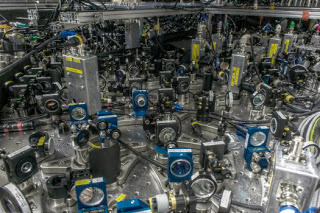 What do the terms squeezing, photon subtraction, entanglement and homodyne detection have in common? Together, they represent the quantum manipulation that researchers used to achieve the first documented case of successful teleportation of quantum light.
What do the terms squeezing, photon subtraction, entanglement and homodyne detection have in common? Together, they represent the quantum manipulation that researchers used to achieve the first documented case of successful teleportation of quantum light. In the journal Science last Friday, researchers reported that they had successfully transferred quantum information from one place to another without having to physically move it. It was destroyed in one place and instantly resurrected in another, "alive" again and unchanged. A notion exploited in the film Prestige, based on an teleportation invention by Nikola Tesla. It's also pretty much what happens in the SF show Star Trek in which an object is "destroyed" atom by atom in one place then built back with the same pattern elsewhere.
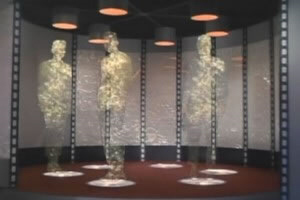 It starts with entanglement of the quantum kind and an Austrian physicist named Erwin Schrődinger. In 1935, Schrődinger came up with a thought experiment in response to a paradox paper by Einstein, Podolsky and Rosen (called the EPR article). Schrődinger's scenario of a cat that might be alive or dead inside a box, depending on an earlier random event became known as Schrődinger's Cat. Schrődinger coined the term "entanglement" (Verschränkung) to describe a property of a quantum mechanical system (paired particles) that act together and behave like one object but remain two separate objects—like two ends of a teeter-totter. If entangled, one object cannot be fully described without considering the other(s). They remain in a quantum superpostition and share a single quantum state until a measurement is made. He proposed the notion that said cat remains both alive and dead (to the universe outside the box) until the box is opened.
It starts with entanglement of the quantum kind and an Austrian physicist named Erwin Schrődinger. In 1935, Schrődinger came up with a thought experiment in response to a paradox paper by Einstein, Podolsky and Rosen (called the EPR article). Schrődinger's scenario of a cat that might be alive or dead inside a box, depending on an earlier random event became known as Schrődinger's Cat. Schrődinger coined the term "entanglement" (Verschränkung) to describe a property of a quantum mechanical system (paired particles) that act together and behave like one object but remain two separate objects—like two ends of a teeter-totter. If entangled, one object cannot be fully described without considering the other(s). They remain in a quantum superpostition and share a single quantum state until a measurement is made. He proposed the notion that said cat remains both alive and dead (to the universe outside the box) until the box is opened. In the Science paper, researchers from Japan and Australia led by Noriyuki Lee of the University of Tokyo studied wave packets of light that existed in a state of quantum superposition—in other words, they existed in two different phases at the same time. They successfully transferred quantum information without losing its integrity.
Superposition permits computers to solve multiple problems at once. This new, faster teleportation process lets scientists move blocks of quantum information around inside a computer or across a network. This will potentially revolutionize quantum communications and computing. Researchers say it will make high-speed, high-fidelity transmission of large volumes of information, such as quantum encryption keys, via communications networks a reality.
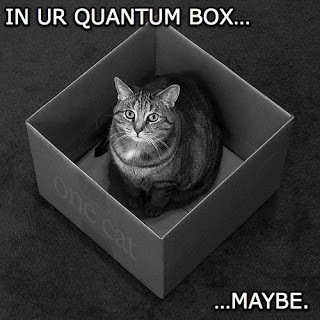 According to most scientists, what we won't see soon — or ever — is something that will 'beam' a person from one place to another. "There are way too many atoms," says Christopher Monroe of the Joint Quantum Institute. "At the other end of the transporter, you need to have some blob of atoms that represents Captain Kirk but has no information in it. I mean, what would that look like?"
According to most scientists, what we won't see soon — or ever — is something that will 'beam' a person from one place to another. "There are way too many atoms," says Christopher Monroe of the Joint Quantum Institute. "At the other end of the transporter, you need to have some blob of atoms that represents Captain Kirk but has no information in it. I mean, what would that look like?" NikolaTesla's notion over a hundred years ago of light as both a particle and a wave formed the basis of what we now call quantum physics. Tesla also investigated the creation of a "wall of light" by manipulating electromagnetic waves in a certain pattern, which he claimed would enable time, space, gravity and matter to be altered at will and engender anti-gravity airships, teleportation and time travel.
So, here's my question: is our imagination limited by our reality or our reality limited by our imagination?
Published on April 25, 2011 23:11
April 18, 2011
What is Your Avatar?
 Have you seen James Cameron's recent blockbuster fantasy, Avatar?
Have you seen James Cameron's recent blockbuster fantasy, Avatar? 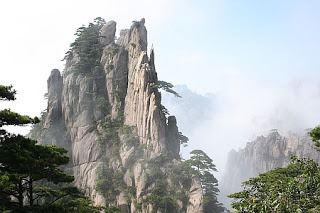 I first watched this visually stunning motion picture in the theatre with some close family friends. What first blew me away about Avatar was how beautifully and thoughtfully the jungle planet and its people were portrayed. I'm an ecologist and I recognized great expertise and detailed effort in the complex designs of the planet's ecosystems. Upon further reflection, I realized how the simple theme of connectivity and respect was reverently and elegantly portrayed in a fractal relationship from environment to culture to story and from the opening frame of story promise to its eventual story fulfillment at the end. This was no simple action fantasy based on the simple plot of being at one with nature. The choice of movie title and planet name, Pandora (see Pandora myth below) all figured into the subtle fractal-layered messages buried beneath the obvious tale, aptly described by reviewer Anne Thompson as "disarmingly sincere." The film's opening sweeps us into a breathtaking panorama of Pandora's lush and exotic jungle to the haunting notes of James Horner's tribal score.
I first watched this visually stunning motion picture in the theatre with some close family friends. What first blew me away about Avatar was how beautifully and thoughtfully the jungle planet and its people were portrayed. I'm an ecologist and I recognized great expertise and detailed effort in the complex designs of the planet's ecosystems. Upon further reflection, I realized how the simple theme of connectivity and respect was reverently and elegantly portrayed in a fractal relationship from environment to culture to story and from the opening frame of story promise to its eventual story fulfillment at the end. This was no simple action fantasy based on the simple plot of being at one with nature. The choice of movie title and planet name, Pandora (see Pandora myth below) all figured into the subtle fractal-layered messages buried beneath the obvious tale, aptly described by reviewer Anne Thompson as "disarmingly sincere." The film's opening sweeps us into a breathtaking panorama of Pandora's lush and exotic jungle to the haunting notes of James Horner's tribal score. 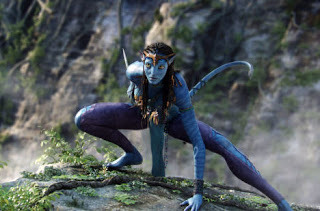 What struck me about the reactions of my friends, others I spoke with, and many reviewers, was that several panned the movie as cliché. "More impressive on a technical level than as a piece of storytelling," was the consensus of many critics. "Except for the great special effects, there was nothing new," many lamented. "It's an old story," they said. What's wrong with that? Isn't everything an old story, which tells a metaphoric rendition of some universal truth? Aren't the very best stories we tell based on ancient tales of morality? Which brings me to clichés. In Writing 101 we all learn to avoid clichés like the plague (oops, there's a cliché!). But let's look at clichés… A cliché is really a ubiquitously recognized metaphor (like the one I just used). Clichés arise, like stereotypes, from cultural and historical truths, told metaphorically through story. Essentially, a cliché is a metaphor. If you think about it, a cliché is a cliché because it represents a core truth in our culture that is repeated over and over because of its relevance to who and what we are. So much so that it becomes ingrained in our cultural expression. The best stories recognize elements of cliché in the telling of story. This does not mean that they avoid the cliché, per se. In fact, the best stories embrace cliché but use it in a refreshing way to provide a new perspective on an old story; one that deserves to be told over and over. This is the case with Avatar.
What struck me about the reactions of my friends, others I spoke with, and many reviewers, was that several panned the movie as cliché. "More impressive on a technical level than as a piece of storytelling," was the consensus of many critics. "Except for the great special effects, there was nothing new," many lamented. "It's an old story," they said. What's wrong with that? Isn't everything an old story, which tells a metaphoric rendition of some universal truth? Aren't the very best stories we tell based on ancient tales of morality? Which brings me to clichés. In Writing 101 we all learn to avoid clichés like the plague (oops, there's a cliché!). But let's look at clichés… A cliché is really a ubiquitously recognized metaphor (like the one I just used). Clichés arise, like stereotypes, from cultural and historical truths, told metaphorically through story. Essentially, a cliché is a metaphor. If you think about it, a cliché is a cliché because it represents a core truth in our culture that is repeated over and over because of its relevance to who and what we are. So much so that it becomes ingrained in our cultural expression. The best stories recognize elements of cliché in the telling of story. This does not mean that they avoid the cliché, per se. In fact, the best stories embrace cliché but use it in a refreshing way to provide a new perspective on an old story; one that deserves to be told over and over. This is the case with Avatar. So, what's the cliché in Avatar? The core story, of course. It is an ancient tale that explores the emptiness of greed and its cousin, fear. It shows the consequence of lack of connectivity (among ourselves and to all other things), and lack of compassion and openness to the unknown. In some important ways it is also about identity, honor and loyalty; how in choosing how we live our lives—whether risking our identity through obedience or risking safety through dissent—we create a legacy that we leave to our children and the world. On the surface the story is simple and clichéd: humans come to the jungle planet of Pandora inhabited by simple primitives, the Na'vi, who possess little technology (the quick assumption is that because they are not technologically advanced, they are simpletons). Showing the common disrespect and lack of compassion that many of us show animals, the humans willingly set out to destroy the Na'vi land and their homes to exploit the planet's resources for themselves.
So, what's the cliché in Avatar? The core story, of course. It is an ancient tale that explores the emptiness of greed and its cousin, fear. It shows the consequence of lack of connectivity (among ourselves and to all other things), and lack of compassion and openness to the unknown. In some important ways it is also about identity, honor and loyalty; how in choosing how we live our lives—whether risking our identity through obedience or risking safety through dissent—we create a legacy that we leave to our children and the world. On the surface the story is simple and clichéd: humans come to the jungle planet of Pandora inhabited by simple primitives, the Na'vi, who possess little technology (the quick assumption is that because they are not technologically advanced, they are simpletons). Showing the common disrespect and lack of compassion that many of us show animals, the humans willingly set out to destroy the Na'vi land and their homes to exploit the planet's resources for themselves. 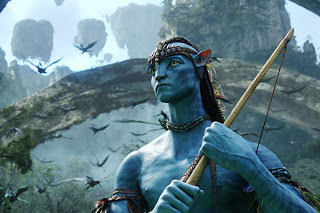 Enter our hero, Jake Sully (Sam Worthington), a paraplegic ex-marine who was recruited to replace his dead twin brother in the Avatar program—in which they are meant to inhabit an avatar native to gain the trust of the Na'vi to push them off a coveted mineral deposit. Jake takes the job for the prize of winning his legs back. He ends up getting their trust but at the cost of also falling in love with their culture and place and the chief's daughter, Neyteri (Zoe Saldana) at the cost of his legs (I'm reminded of Kevin Costner's Dances with Wolves). This propels Jake on a collision course with his concepts of loyalty, honor, and justice. And, ultimately, his identity. Okay, so you're recognizing more plot clichés. Another cliché is the pristine "Nature wisdom" embraced by the natives that strongly reflects our North American native peoples. The Na'vi also worship a "mother" goddess (Eywa; Mother Nature) like many of our ancient pagan cultures.
Enter our hero, Jake Sully (Sam Worthington), a paraplegic ex-marine who was recruited to replace his dead twin brother in the Avatar program—in which they are meant to inhabit an avatar native to gain the trust of the Na'vi to push them off a coveted mineral deposit. Jake takes the job for the prize of winning his legs back. He ends up getting their trust but at the cost of also falling in love with their culture and place and the chief's daughter, Neyteri (Zoe Saldana) at the cost of his legs (I'm reminded of Kevin Costner's Dances with Wolves). This propels Jake on a collision course with his concepts of loyalty, honor, and justice. And, ultimately, his identity. Okay, so you're recognizing more plot clichés. Another cliché is the pristine "Nature wisdom" embraced by the natives that strongly reflects our North American native peoples. The Na'vi also worship a "mother" goddess (Eywa; Mother Nature) like many of our ancient pagan cultures.  Cameron's intention was to create an action fantasy that was both visually stunning and mindful. "The Na'vi represent something that is our higher selves, or our aspirational selves, what we would like to think we are," said Cameron. And even though there are good humans in the film, the humans "represent what we know to be the parts of ourselves that are trashing our world and maybe condemning ourselves to a grim future." He acknowledged that Avatar implicitly criticized the United State's role in the Iraq War. "We know what it feels like to launch the missiles. We don't know what it feels like for them to land on our home soil, not in America," said Cameron. "I think it's very patriotic to question a system that needs to be corralled."
Cameron's intention was to create an action fantasy that was both visually stunning and mindful. "The Na'vi represent something that is our higher selves, or our aspirational selves, what we would like to think we are," said Cameron. And even though there are good humans in the film, the humans "represent what we know to be the parts of ourselves that are trashing our world and maybe condemning ourselves to a grim future." He acknowledged that Avatar implicitly criticized the United State's role in the Iraq War. "We know what it feels like to launch the missiles. We don't know what it feels like for them to land on our home soil, not in America," said Cameron. "I think it's very patriotic to question a system that needs to be corralled."The human scientists of the film discover that the natives are harmoniously linked to one another and to their environment through Nature's intelligent "network". Words like "download" and "link up" suggest another "living" network: the Internet. Which brings us back to the name of the movie and all that it entails: Avatar.
 Avatars aren't anything new (see below). Today, anyone who writes a blog or belongs to Facebook, MySpace or any other online social network has an avatar. Perhaps you have several. If you play 3-D games in virtual worlds, you deal with one to many of them. Avatars are an icon or persona that represents you or an aspect of you on the internet and is usually represented graphically. Mine is SF Girl, which stands for science fiction girl—you guessed it, I write science fiction. Because I'm a writer and speaker, I use a head shot for my image. Many people choose something less "real" to represent their presence on the internet. My friend, Margaret, for instance, uses a little blue alien (Geez! I should have thought of that! LOL!). The point is, your avatar—both image and name—communicates your chosen persona to billions of people in cyberspace. This is how you've chosen to be recognized.
Avatars aren't anything new (see below). Today, anyone who writes a blog or belongs to Facebook, MySpace or any other online social network has an avatar. Perhaps you have several. If you play 3-D games in virtual worlds, you deal with one to many of them. Avatars are an icon or persona that represents you or an aspect of you on the internet and is usually represented graphically. Mine is SF Girl, which stands for science fiction girl—you guessed it, I write science fiction. Because I'm a writer and speaker, I use a head shot for my image. Many people choose something less "real" to represent their presence on the internet. My friend, Margaret, for instance, uses a little blue alien (Geez! I should have thought of that! LOL!). The point is, your avatar—both image and name—communicates your chosen persona to billions of people in cyberspace. This is how you've chosen to be recognized. What is your avatar?
 Meaning and History of Avatar:
Meaning and History of Avatar:In storytelling, an avatar is basically an archetype, representing a concept or quality. Avatar originates from the Sanskrit language in sacred Hindu texts, and is a term for divine beings sent to restore goodness to Earth such as Vishnu, the ever peaceful preserver of the universe, who maintains the cosmic order, Dharma. It translates as "incarnation" or "appearance" or "manifestation". According to the Hindu texts, good and evil forces are usually evenly matched in the world; but at times the balance is destroyed and evil demons get the upper hand. Vishnu then incarnates in a human or animal form to set the balance right. Cameron's Avatar (Jake Sully) basically "reincarnated" from one form to another to set the balance right.
 The Myth of Pandora:
The Myth of Pandora:Cameron chose the name of the planet, Pandora, with deliberation. In Greek mythology, Pandora was the first woman on earth. Zeus ordered Hephaestus, the god of craftsmanship, to create her, so he did—using water and earth. The gods endowed her with many talents: Aphrodite gave her beauty, Apollo music, and Hermes persuasion. Her name Pandora means "all-gifted."
When Prometheus stole fire from heaven, Zeus gave Pandora to Prometheus' brother. Pandora had a jar which she was not to open under any circumstance. Curiousity got the better of her and Pandora opened the jar. All evil escaped and spread over the earth. She quickly closed the lid, but the entire contents of the jar had escaped, except for one thing at the bottom: Hope. Pandora was deeply saddened by what she had done, and feared Zeus' wrath. But Zeus didn't punish her. Eventually, Pandora heard a voice from inside the jar pleading for her to open it a second time. Pandora did, and fixed her earlier mistake by giving humanity the greatest gift of all: Hope.
Published on April 18, 2011 19:08
April 13, 2011
Bruce DePalma and Spinning Fields
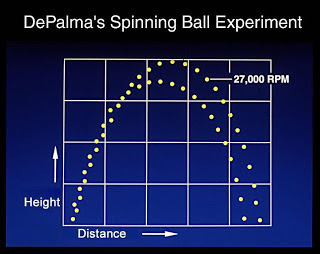 The precise application of Newton's laws … have to be restricted to non-rotating mechanical objects in field-free space. In a gravitational field, the possibility of extraction of greater energy by a new mechanical dimension [rotation] opens up the possibility of an anti-gravitational interaction—Bruce DePalma, March, 1977
The precise application of Newton's laws … have to be restricted to non-rotating mechanical objects in field-free space. In a gravitational field, the possibility of extraction of greater energy by a new mechanical dimension [rotation] opens up the possibility of an anti-gravitational interaction—Bruce DePalma, March, 1977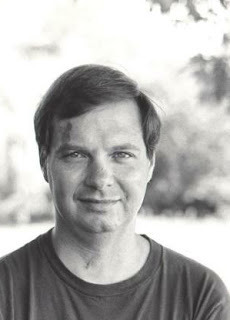 Some consider Bruce DePalma a 20th Century "Galileo"; in a single experiment involving rotation and spinning fields, he refuted Newton's idea of inertia and Einstein's theories of gravitation. But like many gifted, intuitive and visionary scientists before him, DePalma's work was met with skepticism and censure by the traditional scientific community. Despite his recognized brilliance and MIT/Harvard background, DePalma's exotic physics is considered subversive by his mainstream peers and has been ridiculed. It didn't help that he led an equally exotic life that included experimenting with psycho-active drugs and that he harbored a rather volatile temper. DePalma's work was applauded by the free energy community; however, he died unexpectedly in his early 60s in 1997 and his theories have remained unverified.
Some consider Bruce DePalma a 20th Century "Galileo"; in a single experiment involving rotation and spinning fields, he refuted Newton's idea of inertia and Einstein's theories of gravitation. But like many gifted, intuitive and visionary scientists before him, DePalma's work was met with skepticism and censure by the traditional scientific community. Despite his recognized brilliance and MIT/Harvard background, DePalma's exotic physics is considered subversive by his mainstream peers and has been ridiculed. It didn't help that he led an equally exotic life that included experimenting with psycho-active drugs and that he harbored a rather volatile temper. DePalma's work was applauded by the free energy community; however, he died unexpectedly in his early 60s in 1997 and his theories have remained unverified. Was DePalma another misguided scientist or a misunderstood visionary? It took twenty years for Lynn Margulis to vindicate her theories and it took over 200 years for Lamarck's work on soft inheritance to rise victorious from the darkness of scornful condemnation.
DePalma's experiment with steel balls in 1972 showed that certain physical properties of an object are radically altered—both its mass and inertia—if it is rotated. According to DePalma, rotation produces a force field, specifically around the main axis of the rotating object, that he measured and called a torsion field or spin field. Time-lapse stroboscopic photographs revealed that the steel ball rotating at ~27,000 rpm flew higher and fell faster than the companion ball that was not rotating. DePalma had since conducted experiments on "bodies in rotation" including massive objects (e.g., over 30 lbs), spinning at very high velocities (~7600 revolutions/minute).
 The phenomenon that DePalma observed—if verified—refutes Einstein's theories of gravitation and Newton's notion of inertia, which state that all objects, no matter what their mass, fall at the same rate because their inertia (the tendency to remain at rest when at rest and the tendency to remain in motion when in motion) is constant. "The behavior of rotating objects is explained simply on the addition of free energy to whatever motion the rotating object is [already] making. [Thus] the spinning object goes higher and falls faster than the identical non-rotating control."
The phenomenon that DePalma observed—if verified—refutes Einstein's theories of gravitation and Newton's notion of inertia, which state that all objects, no matter what their mass, fall at the same rate because their inertia (the tendency to remain at rest when at rest and the tendency to remain in motion when in motion) is constant. "The behavior of rotating objects is explained simply on the addition of free energy to whatever motion the rotating object is [already] making. [Thus] the spinning object goes higher and falls faster than the identical non-rotating control." The phenomenon "presents a dilemma which can only be resolved or understood ... on the basis of radically new concepts in physics," wrote DePalma in May 1977. Altering the properties of mechanical objects (i.e. changing their inertia) contravenes the conservation of energy, added DePalma, "because we have associated the properties of an object with the space which contains the object. The space which contains the object also contains energy." DePalma contemplated that "we can attempt to extract the energy without worrying where it came from, or we can attempt to understand physics, ourselves, and the Universe by a new formulation of reality."
Richard C. Hoagland "DePalma realized that the spinning ball was not about anti-gravity at all. That, instead, it represented a unique window into a far deeper reality ... re the very energy structure of space and time itself and the extraordinary possibilities of extracting that unlimited, free energy via a variety of appropriate technologies," said Richard C. Hoagland of The Enterprise Mission. "One of our unfinished, on-going discussions (abruptly cut short by Bruce's tragic and untimely death, in 1997 ...) was a resolution of exactly where this free space energy was coming from," added Hoagland. Perhaps, added Hoagland, " it is not really coming from 3-Space at all—but literally from a higher dimensional reality, made available in this dimension as a propagating torsion field distortion."
DePalma claimed that the rotation phenomenon and its force field could be used in a number of different ways—the vibrations from the force field can be a cure for cancer; the rotating effect may be harnessed for the creation of an antigravity device and a 200-mile-per-gallon automobile. He suggested that it could eventually produce a world free from hunger, war and poverty. So, what happened?
Other Lost Magicians & Altruists in Free Energy: Nikola Tesla
Related articles of interest:
"What do the Planet Earth, the Human Brain and Schumann Resonance Have in Common?"
"Cymatics: Exploring how Frequency Changes the Very Nature of Matter and Energy"
"Dreams, REM, and Theta Rhythm"
"The Mozart Effect: the Power of Music"
"The Speed of Life--Part 2: the End of the World?"
"Creative Destruction: Embracing Contradiction and Paradox"
"Rupert Sheldrake and the Physics of Angels"
Published on April 13, 2011 22:05
March 16, 2011
Polar Cities Reprised, Tsunami, tsunami, tsunami...
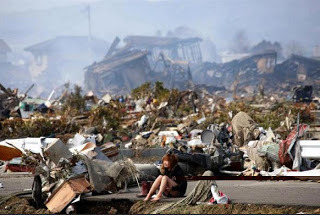 A few years ago, February 22, 2008 to be specific, I posted an article on my now good friend, Danny Bloom (journalist, philosopher, scholar and activist). The article focused on his premise that climate chaos will ensue in the next few centuries and he posited that in the long-term future—several centuries and many generations from now—our planet might look quite different.
A few years ago, February 22, 2008 to be specific, I posted an article on my now good friend, Danny Bloom (journalist, philosopher, scholar and activist). The article focused on his premise that climate chaos will ensue in the next few centuries and he posited that in the long-term future—several centuries and many generations from now—our planet might look quite different. In the vein of Lovelock's "Revenge of Gaia" and Shane Joseph's "After the Flood", both based on predictions of an unprecedented rise in water level due to global heating, Bloom believes in being prepared for what may come. He founded the Polar Cities Research Institute, intended to create modular polar cities designed to house post-climate chaos affected communities.
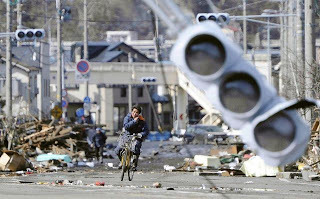 Well, it's today: March 16th, 2011. And the entire world is focused on the present, horrified, on the immediate wave of perhaps one of the world's most disastrous natural events—an earthquake and tsunami that took thousands of lives in highly populated Japan—and we remain poised in hushed anticipation of what may yet transpire at the crippled Fukushima nuclear power plant (a direct result of the earthquake and tsunami).
Well, it's today: March 16th, 2011. And the entire world is focused on the present, horrified, on the immediate wave of perhaps one of the world's most disastrous natural events—an earthquake and tsunami that took thousands of lives in highly populated Japan—and we remain poised in hushed anticipation of what may yet transpire at the crippled Fukushima nuclear power plant (a direct result of the earthquake and tsunami).I woke up that day between 3 and 4 am PST, startled and disturbed by a nightmare of CHAOS. I can't describe it any better than that. I felt more than saw people in despair, fleeing, frozen in horror as something tossed them into chaos. That was right when the tsunami battered the coast of Japan (at 3: 15 pm their time), scattering buildings like they were doll houses and killing thousands of people. When I was visiting my printer that morning and commented on the inclement weather, he said, "The world is angry." That was when I first discovered what happened in Japan earlier that morning.
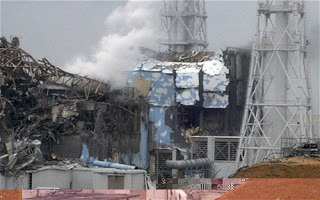 I had another dream once, a dream of a climate change disaster. I pray it doesn't happen. The dream was clearly a metaphor. But, was it possible that I'd tapped into the larger consciousness, like my friend Paco Mitchel, dream analyst, suggested? Is it a warning about impending climate chaos? Danny talked about it a while ago…
I had another dream once, a dream of a climate change disaster. I pray it doesn't happen. The dream was clearly a metaphor. But, was it possible that I'd tapped into the larger consciousness, like my friend Paco Mitchel, dream analyst, suggested? Is it a warning about impending climate chaos? Danny talked about it a while ago…I wanted to update the ongoing dialogue on climate change with some poignant observations and opinions by Danny, three years after his initial promotion of this idea regarding changing our scope and perspective—something we are in dire need of now.
Danny says:
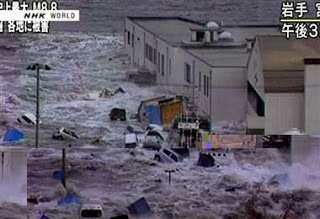 I finally figured out why most people do not want to look at or think about the distant future—say 500 years from now, 30 generations from now—in terms of climate change and AGW, to top what ails the planet and the alleged runaway climate change that COULD lead to climate chaos in 2500....
I finally figured out why most people do not want to look at or think about the distant future—say 500 years from now, 30 generations from now—in terms of climate change and AGW, to top what ails the planet and the alleged runaway climate change that COULD lead to climate chaos in 2500....The reason most people do not even want to engage with me on what I am talking about from my cave in Taiwan is this: most people are heavily invested in the present, and the very near future,iqw/TYJN5-wb6eI/AAAAAAAAETM/tjV01qAycIQ/s320/japan-earthquake-rms of owning property, having a wife or husband, children, grandchildren, inheritors of their DNA and their financial holdings and property, so Most people are so heavily invested materially and financially and property-wise and career-wise [think PHD dept, think job promotion] and also invested so heavily emotionally in their kids and grandchildren and spouses that they simply CANNOT and DO NOT WANT to go where DANNY BLOOM is pointing.
And of course, people like James Lovelock and George Monbiot and Mark Lynas and Fred Pearce and Tim Flannery and James Hansen and Jesse Ausubel simply don't wish to look at my ideas of polar cities for survivors of climate chaos in the year 2500, do not even want to imagine it, so they go into denial. Even good climate activists tell me to piss off.
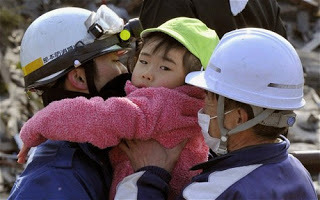 The reason I can go there is because I myself have no wife, no kids, do not own a home, do not own a car, own nothing, have no financial investments or property holdings, no career, no job promotion wanted, no DNA heirs and no financial heirs and no property heirs. So while I am a sensitive person with a good EQ and an emotional attachment to my life and work and friends and climate acquaintances, there is nothing really holding me my mind back from looking at Lovelock's future and imagining we might need POLAR CITIES for the 200,000 survivors of climate chaos in 2500, with 15 billion humans perishing in massive die-offs......I can go there and accept this, even as a mere thought exercise, which is, of course, because I am not invested in the present. Most people are heavily invested in the present and very near future so they cannot even hear me.
The reason I can go there is because I myself have no wife, no kids, do not own a home, do not own a car, own nothing, have no financial investments or property holdings, no career, no job promotion wanted, no DNA heirs and no financial heirs and no property heirs. So while I am a sensitive person with a good EQ and an emotional attachment to my life and work and friends and climate acquaintances, there is nothing really holding me my mind back from looking at Lovelock's future and imagining we might need POLAR CITIES for the 200,000 survivors of climate chaos in 2500, with 15 billion humans perishing in massive die-offs......I can go there and accept this, even as a mere thought exercise, which is, of course, because I am not invested in the present. Most people are heavily invested in the present and very near future so they cannot even hear me.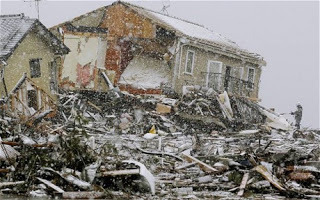 I realized this yesterday, when speaking with a very smart Indian thinker and urban planner in Singpore with wife and kids and good job and wonderful future ahead of him and great present now in his life, he simply did not want to even think about what I was saying: that India will cease to exist as a nation in 500 years because all Indians will have moved north to polar settlements, he did not even want to imagine this, because he was too emotionally and DNA-invested in the present India to want to go where I wanted to take him—even as a thought experiment. We had a good chat. But he simply would not budge. That is when i realized that I can do this , not because I can see the future, but because I am not invested in any way in the present and therefore can put ALL my mind into poking into future climate scenarios as a warning and wake up call. Interesting insight, no? Thanks, Sanjeev, for leading me there!
I realized this yesterday, when speaking with a very smart Indian thinker and urban planner in Singpore with wife and kids and good job and wonderful future ahead of him and great present now in his life, he simply did not want to even think about what I was saying: that India will cease to exist as a nation in 500 years because all Indians will have moved north to polar settlements, he did not even want to imagine this, because he was too emotionally and DNA-invested in the present India to want to go where I wanted to take him—even as a thought experiment. We had a good chat. But he simply would not budge. That is when i realized that I can do this , not because I can see the future, but because I am not invested in any way in the present and therefore can put ALL my mind into poking into future climate scenarios as a warning and wake up call. Interesting insight, no? Thanks, Sanjeev, for leading me there!
Published on March 16, 2011 16:46
Polar Cities Reprised
 A few years ago, February 22, 2008 to be specific, I posted an article on my now good friend, Danny Bloom (journalist, philosopher, scholar and activist). The article focused on his premise that climate chaos will ensue in the next few centuries and he posited that in the long-term future—several centuries and many generations from now—our planet might look quite different.
A few years ago, February 22, 2008 to be specific, I posted an article on my now good friend, Danny Bloom (journalist, philosopher, scholar and activist). The article focused on his premise that climate chaos will ensue in the next few centuries and he posited that in the long-term future—several centuries and many generations from now—our planet might look quite different. In the vein of Lovelock's "Revenge of Gaia" and Shane Joseph's "After the Flood", both based on predictions of an unprecedented rise in water level due to global heating, Bloom believes in being prepared for what may come. He founded the Polar Cities Research Institute, intended to create modular polar cities designed to house post-climate chaos affected communities.
 Well, it's today: March 16th, 2011. And the entire world is focused on the present, horrified, on the immediate wave of perhaps one of the world's most disastrous natural events—an earthquake and tsunami that took thousands of lives in highly populated Japan—and we remain poised in hushed anticipation of what may yet transpire at the crippled Fukushima nuclear power plant (a direct result of the earthquake and tsunami).
Well, it's today: March 16th, 2011. And the entire world is focused on the present, horrified, on the immediate wave of perhaps one of the world's most disastrous natural events—an earthquake and tsunami that took thousands of lives in highly populated Japan—and we remain poised in hushed anticipation of what may yet transpire at the crippled Fukushima nuclear power plant (a direct result of the earthquake and tsunami).I woke up that day between 3 and 4 am PST, startled and disturbed by a nightmare of CHAOS. I can't describe it any better than that. I felt more than saw people in despair, fleeing, frozen in horror as something tossed them into chaos. That was right when the tsunami battered the coast of Japan (at 3: 15 pm their time), scattering buildings like they were doll houses and killing thousands of people. When I was visiting my printer that morning and commented on the inclement weather, he said, "The world is angry." That was when I first discovered what happened in Japan earlier that morning.
 I had another dream once, a dream of a climate change disaster. I pray it doesn't happen. The dream was clearly a metaphor. But, was it possible that I'd tapped into the larger consciousness, like my friend Paco Mitchel, dream analyst, suggested? Is it a warning about impending climate chaos? Danny talked about it a while ago…
I had another dream once, a dream of a climate change disaster. I pray it doesn't happen. The dream was clearly a metaphor. But, was it possible that I'd tapped into the larger consciousness, like my friend Paco Mitchel, dream analyst, suggested? Is it a warning about impending climate chaos? Danny talked about it a while ago…I wanted to update the ongoing dialogue on climate change with some poignant observations and opinions by Danny, three years after his initial promotion of this idea regarding changing our scope and perspective—something we are in dire need of now.
Danny says:
 I finally figured out why most people do not want to look at or think about the distant future—say 500 years from now, 30 generations from now—in terms of climate change and AGW, to top what ails the planet and the alleged runaway climate change that COULD lead to climate chaos in 2500....
I finally figured out why most people do not want to look at or think about the distant future—say 500 years from now, 30 generations from now—in terms of climate change and AGW, to top what ails the planet and the alleged runaway climate change that COULD lead to climate chaos in 2500....The reason most people do not even want to engage with me on what I am talking about from my cave in Taiwan is this: most people are heavily invested in the present, and the very near future, at most NOW and the next two generations, and they are invested in terms of owning property, having a wife or husband, children, grandchildren, inheritors of their DNA and their financial holdings and property, so Most people are so heavily invested materially and financially and property-wise and career-wise [think PHD dept, think job promotion] and also invested so heavily emotionally in their kids and grandchildren and spouses that they simply CANNOT and DO NOT WANT to go where DANNY BLOOM is pointing.
And of course, people like James Lovelock and George Monbiot and Mark Lynas and Fred Pearce and Tim Flannery and James Hansen and Jesse Ausubel simply don't wish to look at my ideas of polar cities for survivors of climate chaos in the year 2500, do not even want to imagine it, so they go into denial. Even good climate activists tell me to piss off.
The reason I can go there is because I myself have no wife, no kids, do not own a home, do not own a car, own nothing, have no financial investments or property holdings, no career, no job promotion wanted, no DNA heirs and no financial heirs and no property heirs. So while I am a sensitive person with a good EQ and an emotional attachment to my life and work and friends and climate acquaintances, there is nothing really holding me my mind back from looking at Lovelock's future and imagining we might need POLAR CITIES for the 200,000 survivors of climate chaos in 2500, with 15 billion humans perishing in massive die-offs......I can go there and accept this, even as a mere thought exercise, which is, of course, because I am not invested in the present. Most people are heavily invested in the present and very near future so they cannot even hear me.
I realized this yesterday, when speaking with a very smart Indian thinker and urban planner in Singpore with wife and kids and good job and wonderful future ahead of him and great present now in his life, he simply did not want to even think about what I was saying: that India will cease to exist as a nation in 500 years because all Indians will have moved north to polar settlements, he did not even want to imagine this, because he was too emotionally and DNA-invested in the present India to want to go where I wanted to take him—even as a thought experiment. We had a good chat. But he simply would not budge. That is when i realized that I can do this , not because I can see the future, but because I am not invested in any way in the present and therefore can put ALL my mind into poking into future climate scenarios as a warning and wake up call. Interesting insight, no? Thanks, Sanjeev, for leading me there!
Published on March 16, 2011 16:46
February 12, 2011
The Man in Asbestos by Krista Peterson
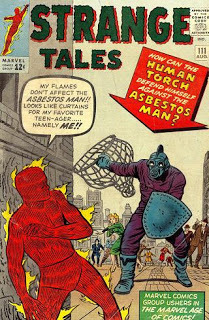 Although humorist Stephen Leacock was not known as a science fiction writer, his short story "The Man in Asbestos – An Allegory of the Future" follows in the dystopian tradition of other writers such as George Orwell and Aldous Huxley. In Leacock's story, first published in 1911, the narrator, a "passionate student of social problems," purposefully falls into a deep sleep for more than 1,000 years so that he can see a future in which nature has been conquered and all human struggles are things of the past. When he awakes, a man clad in a suit made entirely of asbestos explains this new world to the narrator, who slowly comes to realize that it may not be such a paradise after all.
Although humorist Stephen Leacock was not known as a science fiction writer, his short story "The Man in Asbestos – An Allegory of the Future" follows in the dystopian tradition of other writers such as George Orwell and Aldous Huxley. In Leacock's story, first published in 1911, the narrator, a "passionate student of social problems," purposefully falls into a deep sleep for more than 1,000 years so that he can see a future in which nature has been conquered and all human struggles are things of the past. When he awakes, a man clad in a suit made entirely of asbestos explains this new world to the narrator, who slowly comes to realize that it may not be such a paradise after all.Several themes run through the story – the dangers of technology, the significance of work, and the basic need for health and community. Whether or not Leacock was aware of the extent of the dangers of the mineral, the guide's asbestos suit stands as a representation of humankind's hubris toward not only nature, but also public health. A history of asbestos written by professors James Alleman and Brooke Mossman reveals that commercial use of asbestos in the Western world began toward the middle of the nineteenth century, though it didn't hit its stride until the twentieth century. For decades it was considered a "magic mineral" for its heat-resistant capabilities and ease of combining with other materials. At the 1939 New York World's Fair, asbestos company Johns-Manville exhibited a giant "Asbestos Man" to celebrate the usefulness of the substance.
 However, even in the time when Leacock wrote his story, it was known – though not widely – that asbestos could be dangerous, causing lung problems such as scarring, asbestosis, and mesothelioma cancer. Mesothelioma symptoms are dangerous not only in themselves, but also because they can be confused with those of less serious lung conditions until the disease is in its later stages. While it is not clear exactly how many employers or officials were aware of these dangers, it is clear that many of them continued using asbestos long after the risks were known. In fact, in 1930, the Johns-Manville company circulated an internal memo about worker fatalities attributable to asbestos, then several years later worked to suppress reports of these hazards in the media.
However, even in the time when Leacock wrote his story, it was known – though not widely – that asbestos could be dangerous, causing lung problems such as scarring, asbestosis, and mesothelioma cancer. Mesothelioma symptoms are dangerous not only in themselves, but also because they can be confused with those of less serious lung conditions until the disease is in its later stages. While it is not clear exactly how many employers or officials were aware of these dangers, it is clear that many of them continued using asbestos long after the risks were known. In fact, in 1930, the Johns-Manville company circulated an internal memo about worker fatalities attributable to asbestos, then several years later worked to suppress reports of these hazards in the media.  The natural environment has also suffered as a result of humankind's momentary obsession with asbestos. Mining the mineral has caused significant damage to the earth and made entire towns – including Libby, Montana – completely unlivable. Both cats and dogs have been documented as suffering from mesothelioma and other lung problems as a direct result of asbestos exposure, and it is highly possible that many other animals are susceptible as well. Scientific American reports that asbestos is also by far "the most expensive pollutant in terms of regulation and removal," drawing EPA funds away from other environmental problems.
The natural environment has also suffered as a result of humankind's momentary obsession with asbestos. Mining the mineral has caused significant damage to the earth and made entire towns – including Libby, Montana – completely unlivable. Both cats and dogs have been documented as suffering from mesothelioma and other lung problems as a direct result of asbestos exposure, and it is highly possible that many other animals are susceptible as well. Scientific American reports that asbestos is also by far "the most expensive pollutant in terms of regulation and removal," drawing EPA funds away from other environmental problems.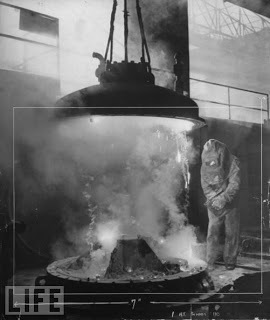 In Leacock's satirical story, the "conquest of nature" involves taming the weather with machinery, eradicating the need for food through extensive agriculture, and generally showing a disregard for the complexity of life on earth. Though the Man in Asbestos claims that humankind has stamped out all diseases, the very clothes he wears presents a significant health risk that he seems oblivious to. Mesothelioma life expectancy is tragically low – the American Cancer Society puts the five-year survival rate at between 5 and 10 percent. Though Leacock may not have known it at the time, he dressed his guide to the future in a symbol of efficiency triumphing over human and environmental welfare.
In Leacock's satirical story, the "conquest of nature" involves taming the weather with machinery, eradicating the need for food through extensive agriculture, and generally showing a disregard for the complexity of life on earth. Though the Man in Asbestos claims that humankind has stamped out all diseases, the very clothes he wears presents a significant health risk that he seems oblivious to. Mesothelioma life expectancy is tragically low – the American Cancer Society puts the five-year survival rate at between 5 and 10 percent. Though Leacock may not have known it at the time, he dressed his guide to the future in a symbol of efficiency triumphing over human and environmental welfare.Recommended Reading:
Alleman, J.E. and Mossman, B.T. 1997. Asbestos revisited. Scientific American: 70-75.
American Cancer Society. 2011. Malignant mesothelioma. Retrieved from http://www.cancer.org/Cancer/MalignantMesothelioma/DetailedGuide/malignant-mesothelioma-detailed-guide-toc
Brodeur, P. 1985. Outrageous Misconduct: The asbestos industry on trial. Pantheon Books
Brown, M. 2010. Asbestos contamination still taking toll on town. Associated Press. Retrieved from http://www.msnbc.msn.com/id/37217275/ns/health-infectious_diseases/
Castleman, B.I. 1996. Asbestos: Medical and legal aspects. Aspen Law and Business: Englewood Cliffs, NJ.
Author Biography:
Krista Peterson is a 23 year old student living in Florida. She is an aspiring writer with a passion for the health & safety of our community & environment. In her free time she enjoys reading, doing yoga, and playing with three 3 dogs. She is currently working on creating her own blog.
Published on February 12, 2011 00:35
January 31, 2011
All Dogs Go to Heaven
I've given Toulouse LeTrek the COOL Travel Cat lots of blog-time lately. It's only fair that I give some time to dogs, like Oli. And this little tidbit I came across… So, I'd like to share with you this interesting exchange (Thanks, Cathy!):









On his cool blog, Father Joe contemplates this possibility:
"C.S. Lewis remarked that canine loyalty and affection oftentimes put human fidelity and friendship to shame. Because of this he thought that maybe dogs would be allowed to join their [human companions] in heaven. Critics contend that this is just another instance of over-blown English sentimentality. In any case, there is a growing consensus that the outer circle of hell is patrolled by cats."
Let's see what Toulouse has to say about that!









On his cool blog, Father Joe contemplates this possibility:
"C.S. Lewis remarked that canine loyalty and affection oftentimes put human fidelity and friendship to shame. Because of this he thought that maybe dogs would be allowed to join their [human companions] in heaven. Critics contend that this is just another instance of over-blown English sentimentality. In any case, there is a growing consensus that the outer circle of hell is patrolled by cats."
Let's see what Toulouse has to say about that!
Published on January 31, 2011 21:30
December 25, 2010
Christmas Yoga with Toulouse
 Here by popular demand is an 8-pose Yoga Exercise for Christmas given by my good friend, Toulouse LeTrek:
Here by popular demand is an 8-pose Yoga Exercise for Christmas given by my good friend, Toulouse LeTrek:While Nina is busy doing Christmas things (probably eating and drinking herself silly), I thought I'd provide a public service to those of you indulging in the holiday festivities. Here is my 8-pose Christmas Yoga Exercise to help you gear up for all that Christmas cheer. It's just the thing for a body bloated on Christmas pudding, turkey and baking.
Did you know that the word yoga means "union". Yoga creates harmony by controlling your breath and holding your body in steady poses called "asanas". Five key elements include proper breathing, proper exercise, proper relaxation, proper diet, and positive thinking and meditation. Yoga should be supervised by a qualified teacher. Don't worry. That's me.
So, first off, choose a pleasant, peaceful and spacious setting for your exercises. You might like to turn the lights down and light some candles and put on your favorite Christmas music (so long as it isn't "I am Santa Claus" by Bob Rivers or "Takin' Care of Christmas" by Randy Bachman). You can use a mat for extra comfort and give yourself lots of room. Then you need to do some stretching exercises …
 The purpose of the Headstand is to rest the heart, which usually has to work against gravity and will likely do some extra laps this Christmas with all the cholesterol coursing through you from figgy pudding, turkey stuffing and eggnog. Some people think headstands heal everything. Well, it sure gives you a different perspective on things! And that's gotta be good for you.
The purpose of the Headstand is to rest the heart, which usually has to work against gravity and will likely do some extra laps this Christmas with all the cholesterol coursing through you from figgy pudding, turkey stuffing and eggnog. Some people think headstands heal everything. Well, it sure gives you a different perspective on things! And that's gotta be good for you. The Dolphin pose strengthens the arms and shoulders. It kind of prepares you for the headstand. I'm doing a great job, aren't I?
The Dolphin pose strengthens the arms and shoulders. It kind of prepares you for the headstand. I'm doing a great job, aren't I?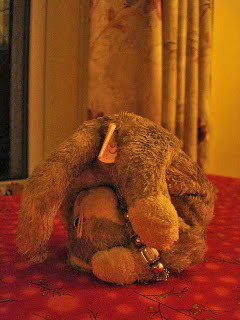 The Plough pose increases overall flexibility, but it's particularly effective for relieving tension in the upper back and shoulders; especially after you've been with the relatives for over two days...
The Plough pose increases overall flexibility, but it's particularly effective for relieving tension in the upper back and shoulders; especially after you've been with the relatives for over two days... Here's the Cobra, one of my favorite positions. It does tons of good things like toning and strengthening the superficial and deep muscles of the back and abdominal regions. It also increases backward bending flexibility—something a cat like me does lots—and it relieves tension, especially in the lower back. Good for after you've been shoveling the driveway…
Here's the Cobra, one of my favorite positions. It does tons of good things like toning and strengthening the superficial and deep muscles of the back and abdominal regions. It also increases backward bending flexibility—something a cat like me does lots—and it relieves tension, especially in the lower back. Good for after you've been shoveling the driveway… The Locust is a backward bending exercise that increases flexibility of the upper back and strengthens the lower back muscles. Holding the pose also massages the internal organs and makes them frisky—which you will be too; good for combating the "big meal" doldrums.
The Locust is a backward bending exercise that increases flexibility of the upper back and strengthens the lower back muscles. Holding the pose also massages the internal organs and makes them frisky—which you will be too; good for combating the "big meal" doldrums. The Camel pose I'm doing here…well, I might have gotten carried away… lets you exercise all your back muscles and extends your spinal column by bending your back fully. It's useful for increasing spinal and hip flexibility.
The Camel pose I'm doing here…well, I might have gotten carried away… lets you exercise all your back muscles and extends your spinal column by bending your back fully. It's useful for increasing spinal and hip flexibility. Here I am doing the Spinal Twist, which stretches the spine and helps the vertebrae regain their mobility. The roots of the spinal nerves and the nervous system get toned and provided with increased blood supply.
Here I am doing the Spinal Twist, which stretches the spine and helps the vertebrae regain their mobility. The roots of the spinal nerves and the nervous system get toned and provided with increased blood supply. You need a lot of strength, flexibility and concentration to do the Peacock. As you can see, I have a lot of it! When the pose is held, your elbows press into the abdominal region, drawing fresh blood to the area and nourishing your internal organs.
You need a lot of strength, flexibility and concentration to do the Peacock. As you can see, I have a lot of it! When the pose is held, your elbows press into the abdominal region, drawing fresh blood to the area and nourishing your internal organs.Last but certainly not least, is the Final Relaxation, my favorite part and I do it well, as you can see… Relaxation is important because it leaves you with a calm mind and relaxed muscles. It allows the body to absorb the energy released by the asanas. You need to relax this way for at least five minutes. I'm so good at it that I do it for … well, hours.

Have a safe, joyous and meaningful "giving season"
Merry Christmas, everyone!
Published on December 25, 2010 11:49
November 27, 2010
Sensual Writing and Why I Love the Smell of Smoke
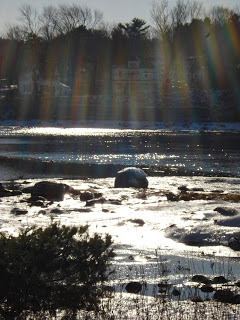 Last week, as I was driving down a winding country road on my way to Bridgewater from Lunenburg, I caught sight of the billowing smoke of a small fire. Someone was obviously doing some roadside autumn clearing.
Last week, as I was driving down a winding country road on my way to Bridgewater from Lunenburg, I caught sight of the billowing smoke of a small fire. Someone was obviously doing some roadside autumn clearing.Without thinking, I slid the window open and inhaled deeply as I passed through the billows. I was preparing to experience the exquisite "taste of home". As I breathed in the aroma of burning vegetation, memories of outdoor campfires and old wood-burning stoves flooded in from my childhood. A goofy smile slid across my face as I bathed in the joyful innocence of adventure, wonder and the comfort of the hearth. I'd had a wonderful childhood and the smell of smoke brought it back to me in its full glory.
What does this have to do with sensual writing? Everything. That's because writing is metaphoric. That is what storytelling is: sharing universal truth through metaphor, delivered from the heart, where these lie. Sensual writing doesn't just involve making sure to include at least a few senses like sight, sound, smell, taste and touch in your narrative--though this is a good writing mantra. To write sensually involves much more than the simple description of a sense, though this is certainly the first step (and something all too often neglected by novice writers).
To not connect a described sense to a memory or emotion is to miss a very important opportunity as a storyteller: that of enlightening the reader on some aspect of the POV character experiencing the sense (things like their history, the quality and nature of their relationships, their viewpoints, education, prejudices, how and what they've experienced in their life).
Here's what I mean:
EXAMPLE 1: Ben walked into the Grand Banker Pub and immediately caught the tantalizing aroma of garlic and pears amid the din of jubilant laughter, cackles and desultory conversation. The amber light enhanced the rich tones of nautical oak. He saw some friends drinking in the corner and sauntered toward them, smiling.
EXAMPLE 2: Ben hesitated at the Grand Banker Pub door, inhaling the exquisite aroma of garlic and pears amid the din of jubilant laughter, cackles and desultory conversation. For a moment he was back on the boat, reliving the party that changed his life. He'd stopped eating pears after that. He caught sight of his friends drinking in the corner, beneath the amber light. Like a sailor seizing a rope, he sauntered toward them, a huge smile pasted on his face.
The first example describes; the second example emotes. The first example describes the place well but it doesn't provide us with any information about Ben, except that he likes the aroma of garlic and pears. We don't know why. In the second example, his senses are used to hint at intrigue linked to memories that, in turn, are linked to the associated sense—in this case the smell of garlic and pears. This is the power of sensual writing.
Bringing it back home with the senses.
Other articles I've written on how to improve your writing appear on the righthand sidebar of my blog. Here are some that are most relevant to this article:
1. The Novelist: Sensual Writing
2. The Novelist: The Importance of Setting
Published on November 27, 2010 20:31



